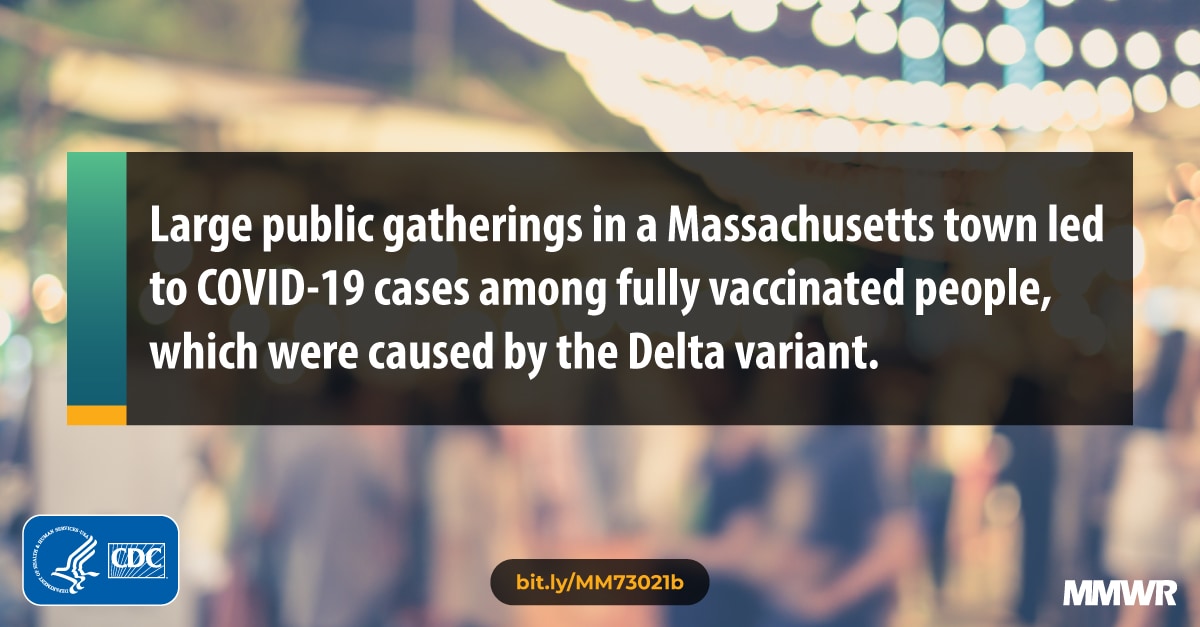It's unlikely the unvaccinated would have been more careful than the vaccinated.
It's not clear that's the case, at all. This is an extremely high vaccination rate area. Vaccinated individuals may have felt safer than unvaccinated individuals. Risk compensation is a known phenomenon.
The vaccination rate in June amongst Cape Cod residents age 12 and over was 82%. It was possibly even higher in the affected population (median age 40, but should have had minimal population age 12-20 - there was someone less than 1 year old though. The median individual had been fully vaccinated for nearly three months, by end of April).
A doctor and a university expert on COVID-19 say vaccinated Cape Codders are in a good position to fend off the highly contagious Delta variant.
www.capecodtimes.com
When it comes down to it, we have no idea what the population exposed was. That's the point. Further study would be needed to figure out the demographics and vaccination rate of those exposed.
We do know the symptomatic rate of vaccinated was 79%. Unvaccinated could be at worst 21% more.
Amongst those who were tested.... (The overall symptomatic rate amongst tested individuals was 74%.)
It's really hard to say. We don't know numerators or denominators here. There are so many different ways it could go I thought about it and then just gave up.
1) Not everyone symptomatic will get tested. It might depend on symptom severity.
2) Not everyone asymptomatic will get tested.
3) Vaccinated individuals who get infected may have lower or higher rates of asymptomatic COVID than unvaccinated individuals. We don't know. You'd think it would be lower, but it's actually hard to say, because we're talking about individuals where they actually got infected, which may select for individuals who are more likely to be symptomatic.
Remember, there is a pool of probably ~1000 people (2-3x the number of cases identified) who were COVID positive but never got tested, based on historical underascertainment rates. We do not know whether they were vaccinated or not. What if in this group there were 750 unvaccinated people and 250 vaccinated people who weren't identified, because they were mostly young people, who were entirely asymptomatic or mildly symptomatic, who had been hitting the bars? We just don't know the numbers.
Is there a reason to assume it will be significantly different?
Plenty. Different age population, etc. Lots of potential confounders. Demographics of people who have been vaccinated are MUCH different than people who have not been vaccinated.
Also 80% of the hospitalized were vaccinated, which also just conforms to 70% of population being vaccinated.
Again, think of the demographics of those who are vaccinated, vs. those who are not. Really have to know everything about the populations in question. It's also a very small sample so drawing any conclusion is really difficult. As an example: Approximately, median age of vaccinated was 42 (given), while median age of unvaccinated was 34 (this value was not given, but overall median was 40). That 8-year age difference changes risk of hospitalization by about a factor of 2-3 (assuming rate goes up similar to risk of death).
I don't mean to minimize delta. You should mask up even if you're vaccinated, in public indoor settings (in my opinion). But as the CDC says,
you cannot determine vaccine efficacy from this study. And I trust them on that!
View the vaccine as a moat or a line of defense. It's not impregnable. Add layers.
I would bet that if you did a challenge study of vaccinated individuals with the alpha variant (or whatever), and challenged them all with massive doses of the virus inhaled into their lungs (and of course did the same for a placebo group of unvaccinated individuals), that the vaccine efficacy would be MUCH lower than has been measured in the randomized, placebo-controlled clinical trials. The vaccine isn't magic.

 www.fox5vegas.com
www.fox5vegas.com











